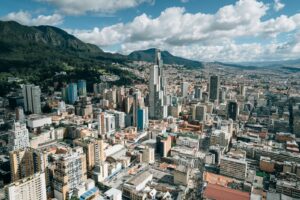Scotland’s first low-emission zone (LEZ) came into effect in Glasgow on Monday (December 31).
The first phase of Glasgow’s LEZ will mean 20% of all buses that pass through the city must now meet emissions standards that comply with EU standards.
Phase Two will come into effect in December 2022 and will apply to all vehicles entering the zone. The scheme is being enforced by Automatic Number Plate Recognition (ANPR).
Low Emission Zones were first recommended for Glasgow in 2008, and then promised and not delivered for the 2014 Commonwealth Games. Glasgow was named in a UK Supreme Court ruling on illegal air pollution back in 2015, and the Court ordered ‘urgent and immediate’ action to tackle pollution levels in the city.
Gavin Thompson of Friends of the Earth Scotland criticised the phased nature of the LEZ, saying it will only require an improvement in a ‘tiny’ number of buses to meet the first year’s target.
‘Despite the offer of public money, private bus operators in Glasgow have been allowed to drag their heels, and people will suffer as a consequence,’ he said.
‘There are good things happening in Glasgow. The expansion of the cycle network, the Avenues project, and the forthcoming pedestrianisation of George Square will all help encourage sustainable transport and improve air quality, but the buses need to be cleaned up.
‘Glasgow City Council need to push the bus companies to stop polluting, and move more quickly to include all vehicle types in the Zone, to protect the health of Glaswegians.’
Glasgow’s LEZ will eventually adopt the following emission standards:
- Euro 3Â for motorcycles and mopeds
- Euro 4Â for petrol cars, vans, minibuses and other specialist vehicles
- Euro 6Â for diesel cars, vans and minibuses and other specialist vehicles
- Euro VIÂ for lorries, buses and coaches and other specialist heavy diesel engine vehicles
A Glasgow City Council spokeswoman called the phased approach ‘pragmatic’.
‘Glasgow is committed to cleaning up the air and is leading the way by introducing Scotland’s first low-emission zone at the end of the year,
‘Glasgow’s LEZ is modelled as being capable of making significant reductions in levels of air pollution in the city centre. Focusing initially on local service buses, the strict emission standards required to enter the LEZ will apply to all vehicles by the end of 2022.
‘This pragmatic and phased approach will ensure a manageable, yet robust timetable for implementation that looks at the city’s overall needs to ensure it won’t have a detrimental impact on people’s lives, businesses and the vitality of the city centre.
‘Other cities across Europe adopted similar lead in times for their low-emission zones, so it’s seen as a reasonable amount of time to get the message out to businesses and residents so they are informed and can prepare. Glasgow’s LEZ is a progressive policy that will deliver cleaner air for the people of Glasgow.’
Paul White, Deputy Director of CPT Scotland said; ‘Buses are very much part of the sustainable and active transport solution to Glasgow’s LEZ and can help achieve the Government’s climate change targets. One bus can replace up to 75 car journeys, reducing congestion and improving air quality.
‘We welcome Glasgow’s commitment to working in partnership with bus operators. The bus industry will continue to invest in modern, greener vehicles. Â If the Council is able to provide an operating environment that prioritises public transport then we can maximise the benefits of this investment for the people of Glasgow.’
The Scottish Government has pledged to introduce Low Emission Zones into Scotland’s four biggest cities; Glasgow, Edinburgh, Aberdeen and Dundee between 2018 and 2020.
Glasgow’s Low Emission Zone will help make our city centre a cleaner, healthier and more pleasant place to be. It’s being phased in from 31 December, starting with local service buses only 🚌
Hear more from Cllr @AnnaLangside and visit 👉 https://t.co/6qBLACm0tx#GLEZGOW pic.twitter.com/6Ly4wkCuJF— Glasgow City Council (@GlasgowCC) December 28, 2018















